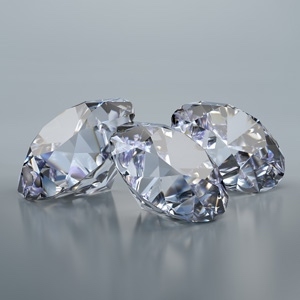Is the Lab-Grown Diamond Pivot Finally Here?
By Rob Bates | March 06, 2024

"Jeff Zucker, the former head of NBC Entertainment and CNN, once warned media companies not to trade “analog dollars for digital pennies.”
He was saying, in essence, that they shouldn’t mess up a profitable existing business model for one that’s unproven and potentially shaky. That happened anyway, and it’s been devastating to the media industry. Who wants to pay for a cable bundle to watch The Daily Show on Comedy Central when you can watch the best parts for free the next day online?
A similar situation now exists with lab-grown diamonds. Both the created and natural diamond sectors are currently struggling. That’s in part due to the ongoing (and needless) hostilities between them. It also may have been inevitable: Lab-grown diamonds are simply too similar to naturals to have not made an impact.
The past few years were extraordinarily good for synthetic sellers, with manufacturers and retailers raking up incredible profits, thanks to super-high margins that incentivized jewelers to push them on consumers. But some are starting to murmur that the party’s over.
The biggest issue for lab-grown has always been falling prices, and now the drops are hurting the business’ long-term viability. Most small jewelers can’t survive selling $1,000 or $2,000 engagement rings, no matter how big the margins are. To paraphrase Jeff Zucker, they don’t want to trade natural dollars for lab-grown pennies.
And so we see retailers like Signet and Robbins Brothers “reintroducing” natural gemstones to their customers. The problem is, certain jewelers have been telling their customers for years that lab-made diamonds are the exact same product as naturals—which is an arguable point. They have also claimed that lab-growns are more “ethical” and “eco-friendly” than mined stones—which is far less justifiable. (It’s also forbidden.) No matter. If they want to push natural, they may have to walk back much of what they said about lab-grown.
That won’t be easy. Consumer demand has already been seeded. I have talked to retailers who don’t like the product, and prefer not to carry it, but feel they have to, because some customers prefer lab and they’d rather not lose a sale.
Last month, Business Insider declared, “The lab-grown diamond boom is over.” I initially thought that headline was overstated—but then I talked to people in the market. Wholesalers are gloomy. Many retailers want out. Tenoris recently reported that jewelers’ profits from loose lab-grown fell for the first time since it started tracking them.
At the moment, consumer demand for lab remains strong, and may even still be growing, following years of pro-lab-grown articles in the press. However, media coverage has turned a tad more skeptical. There’s also less of it now that the brands no longer have an endless stream of investor money to hire PR firms. At one point it felt like I was getting a pitch from a lab-grown company almost every day. Lately I get one maybe every two weeks.
A 2016 Morgan Stanley report on lab-grown diamonds nailed a lot of what’s since come to pass. (Seriously, check it out.) The analysts recommended the natural side up its ad spend to $1 billion a year to combat lab-grown. Obviously that didn’t happen—and Russia’s invasion of Ukraine seriously hurt the Natural Diamond Council’s plans to promote mined stones worldwide.
At least miners now recognize the dangers of not promoting their product. (It’s no accident that whenever there’s a crisis in the market, De Beers puts out a new ad campaign. It’s often the same campaign.) For most of the pandemic, the lab-grown industry seemed to be out-marketing the natural. That is starting to change—and may be somewhat responsible for the natural sector’s fledgling comeback.
Miners shouldn’t consider the threat extinguished, however. There will always be issues with disclosure and “mixing.” And despite the increasing market separation, I believe created gems will always make a dent in mined market share, no matter what Anglo American’s models say. Even in the unlikely event that every jewelry store in America stops selling lab-grown engagement rings, they could still be sold direct to consumers online.
For all its issues, the lab-grown business faces a bright future. Pandora—which, ironically, sources from De Beers—has done quite well with its lab line. The overall industry, though, needs to set its sights on creating beautiful gems that consumers will be proud to own, not just gray-tinged stones they got a deal on. It needs to get past its current “churn ’em out, sell ’em cheap” mentality, which has so devalued the product, it’s almost comical. (De Beers has tried for years to “produce to demand”—a challenge for a miner. Growers can do it, and don’t. That makes no sense—why produce millions of carats when there’s no market for them?)
Plainly put, the created gem industry will only thrive if it ... "
https://www.jckonline.com/editorial-art ... ond-pivot/